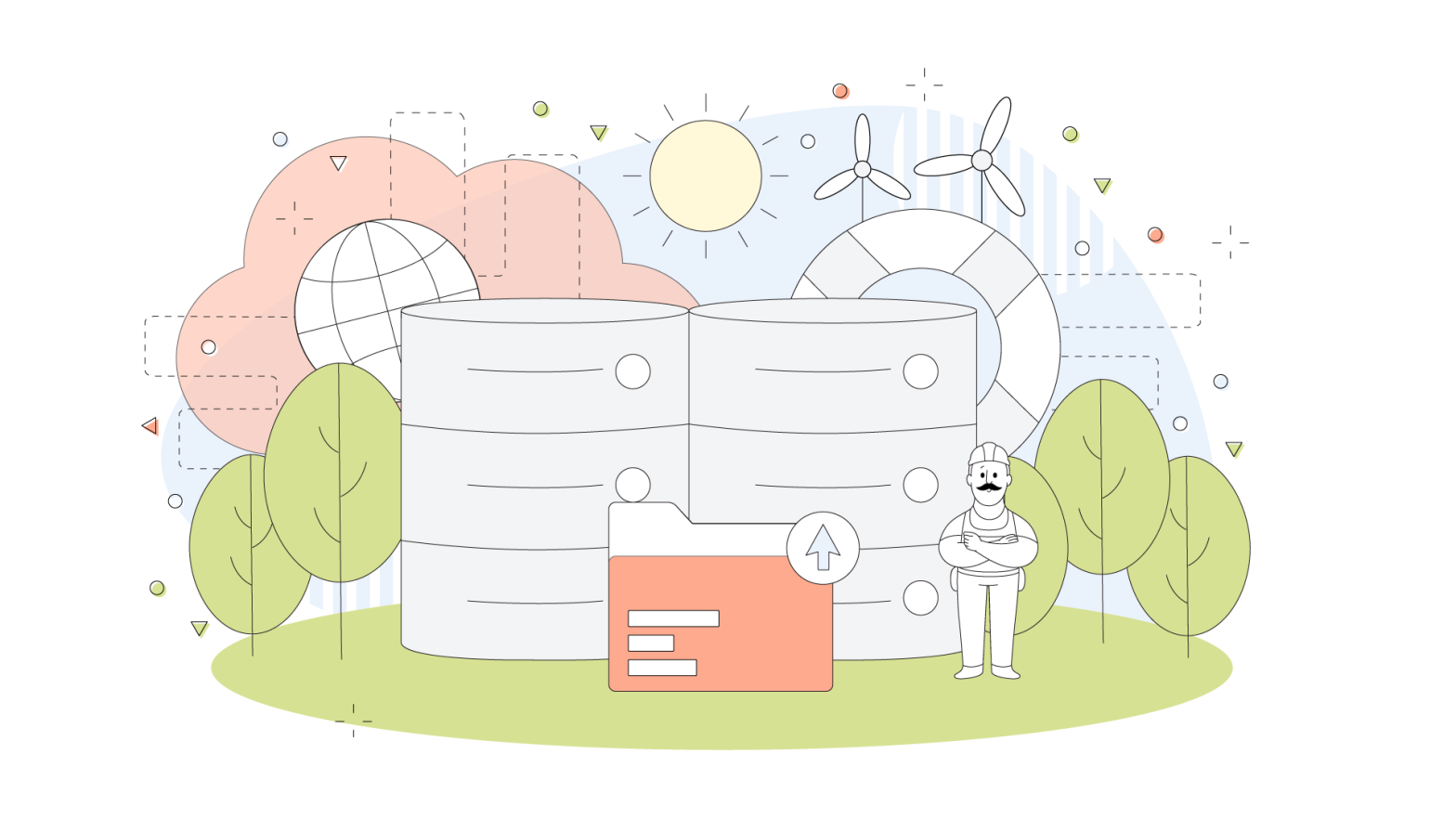The last few years have proven that the digital world and the health of our planet are deeply connected. The rise of technologies like AI and social media holds great promise for tackling big issues like climate change and general social and environmental issues.
One of the most important events in recent memory, the COVID-19 pandemic, has shown us just how much we rely on technology. It’s been crucial for everything from keeping in touch while we’re stuck at home to tracking the virus’s spread.
However, as great as the expansion of technology has been in some regards, it also comes with severe consequences for the environment. As technology advances and spreads, its energy consumption also increases. This leads to problems like increased carbon emissions and electronic waste.
In short, we’re at a crossroads. Technology can be a powerful tool for good, but only if we use it wisely. We need to find ways to make sure our digital advances don’t come at the expense of our planet’s health.
This means that all businesses, including those in web hosting, must now look at the big picture and work together to find good solutions for both the environment and society. With that in mind, this article discusses green hosting and seeks to put together a business case for green hosting.
- The Environmental Impact of Traditional Hosting
- What Green Hosting Entails
- How Green Hosting Works
- Benefits of Green Hosting
- Emerging Trends in Green Hosting
- The Business Case for Green Hosting
The Environmental Impact of Traditional Hosting
The environmental impact of traditional hosting is significant. This is largely due to the extensive electricity demands required to power servers and keep them cool. Traditional data centers use a lot of energy, often from non-renewable sources, leading to high carbon emissions.
Even at the lowest end of available estimates, the data center industry is responsible for as much greenhouse gas emissions as the airline industry, while energy expenditures are on par with entire countries like Spain or the UK. Even small tasks, like using a PDF editor or sending emails, add up to a big energy demand when millions of people do them. This highlights the need for data centers to use less energy and more renewable sources.
As of 2012, the wider IT sector’s electricity consumption was more than that of Russia and nearly half of the US’s total consumption. Additionally. Greenpeace predicts that the tech sector’s electricity use might jump to 20% of the global total by 2025, up from 7%. This surge is due to growing cloud computing needs and advanced technologies like AI, which are very power-intensive.
The reliance on fossil fuels for energy further exacerbates the environmental impact, contributing to greenhouse gas emissions and global warming.
Data centers’ environmental impact goes beyond just using a lot of electricity. Cooling these centers, which can take up to 40% of their energy, increases their carbon emissions, especially where it’s hot.
In 2019, the tech industry also produced 54 million metric tons of e-waste because old equipment was replaced. Hazardous cooling chemicals and the use of unsustainably mined battery components are additional problems.
What Green Hosting Entails
Green web hosting is an environmentally friendly approach that uses sustainable energy sources or offsets emissions to minimize the environmental impact of web hosting activities.
Not many companies have put measures in place to go green. This is because these decisions are made by C-suite executives who aren’t informed or tech-savvy, to say the least. For instance, they don’t have time to look for AWS alternatives, research a company’s effort to reach zero carbon, and other details.
Instead, they’ll look towards the bottom line and go with AWS, Google, or Microsoft, who maintain an oligopoly simply due to the economies of scale that are at play.
However, it’s about time all businesses put in the effort to foster sustainability while achieving their business goals This can include using renewable energy like solar or wind power, utilizing energy-efficient hardware, and engaging in tree planting to compensate for CO2 emissions.
For instance, at HostPapa, we support solar and wind energy, specifically buying RECs to power our operations sustainably. This approach not only reduces our carbon footprint but also supports broader renewable energy initiatives.
How Green Hosting Works
Green hosting operates on the principle of minimizing the environmental impact of web hosting services. It is a sustainable approach to hosting websites by using renewable energy sources like solar, wind, or hydroelectric power to run data centers, thereby reducing reliance on fossil fuels.
Green web hosting providers also invest in energy-efficient infrastructure, such as energy-efficient servers, server virtualization, and advanced cooling systems, to lower energy consumption and carbon emissions.
Additionally, many green hosts participate in carbon offset programs, investing in environmental projects that reduce greenhouse gas emissions to offset their own carbon footprint. These actions contribute to the fight against climate change, support renewable energy adoption, and enhance a company’s corporate social responsibility profile.
Choosing green hosting boosts a website’s green credentials, attracting people who value environmental responsibility. It’s also a smart choice for the future, as it aligns with the increasing global focus on sustainability and potential regulations for green energy use.
Remember that exploring sustainable practices goes beyond just choosing eco-friendly web hosting. Organizations can adopt various strategies to improve their environmental impact, such as promoting Workday staff augmentation for more efficient data management, data migration to the cloud, or even getting rid of redundant resources. You should approach green hosting as the first step toward a broader engagement with sustainability efforts, aligning with a future where green initiatives will become standard practice.
Benefits of Green Hosting
Green hosting offers a range of benefits that extend beyond just being environmentally friendly. Here is a short, concise list of some of the most relevant benefits of going green:
- Green hosting helps the environment by reducing carbon emissions.
- It saves money for businesses by using energy-efficient technologies.
- Choosing green hosting boosts a company’s image with eco-friendly customers.
- It ensures businesses comply with environmental laws, avoiding penalties.
- Green hosting prepares companies for the future in a changing market.
- Websites hosted with green hosting load faster, improving user experience.
- It supports sustainable practices, promoting a healthier planet for everyone.
Emerging Trends in Green Hosting
Emerging trends in green hosting reflect the broader web hosting industry’s shift towards more sustainable and environmentally friendly practices. These trends are driven by increasing awareness of the environmental impact of digital infrastructures and a growing demand for eco-conscious web solutions on the part of consumers. Here’s an overview of the key trends in green hosting:
Multi-Cloud and Hybrid Hosting
To improve reliability and reduce the environmental impact, companies are adopting multi-cloud and hybrid hosting strategies. These approaches allow for better resource utilization and efficiency, reducing unnecessary energy use by leveraging the cloud’s scalability and flexibility
Containerization and Serverless Hosting
Containerized hosting and serverless architectures are gaining popularity due to their efficiency and scalability. These technologies allow for more precise resource allocation and usage, minimizing idle computing resources and, consequently, reducing energy consumption
Carbon Offset and Neutralization
Hosting companies are participating in carbon offset programs to neutralize their carbon emissions. This involves investing in environmental projects that reduce carbon dioxide and other greenhouse gases in the atmosphere.
Some companies also go above and beyond by offsetting more than their own carbon footprint, contributing positively to the environment
The Business Case for Green Hosting
Going green with your hosting brand is a smart move, even on the purely business side of things. With more people caring about the environment, choosing eco-friendly options can set you apart from the competition. Studies show that over 64% of consumers are increasingly concerned about climate change, so offering green hosting can attract customers who share these concerns.
Going green allows you to make a positive impact on the planet and also boosts your brand image. People like supporting businesses that care about the environment. Plus, going green can save you money in the long run. While there might be some upfront costs, using renewable energy and energy-efficient tech can lower your bills over time.
In the end, choosing green hosting makes good business sense. It helps you stand out, build customer loyalty, and even attract investors who care about sustainability. So, consider making the switch to green hosting and reap the benefits for your brand and the planet.
Conclusion
Green hosting marks a significant step towards a more environmentally friendly approach to web services.
Prioritizing renewable energy and energy-efficient practices allows providers to not only reduce their carbon footprint but also improve the performance of their websites. This aligns with the increasing demand for eco-conscious solutions from consumers and businesses alike.
As we move forward, the adoption of green hosting promises a brighter, more sustainable future for the digital world.
Enjoyed this post? Head over to the HostPapa blog to read more!
Author: Andrew Ginsberg




